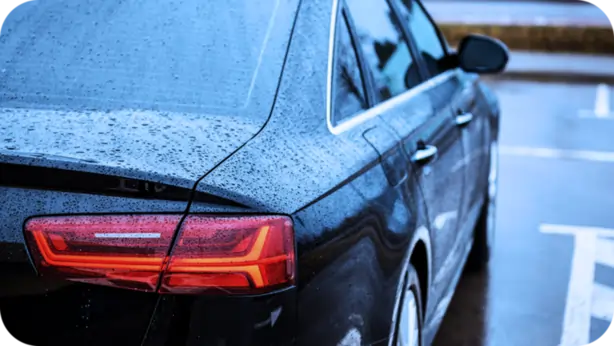Navigating through rainy weather can turn into a less-than-ideal situation when your car experiences a breakdown. Most car components are not waterproof, making them susceptible to malfunctioning when exposed to water. Additionally, reduced visibility during rain poses a risk of drivers finding themselves stranded with a non-functional vehicle. Therefore, it's crucial to be prepared and know what steps to take when your car stops in the rain.
To assist you in such situations, we've outlined the necessary actions to follow when facing a breakdown in rainy conditions.
Steps to Take When Your Car Breaks Down in the Rain:
Step 1: Decelerate Your Car
Rainwater makes roads slippery, making it challenging to bring your car to an immediate stop. When facing malfunctions, decelerate your car gradually. Common signs of rainwater damage include spongy brakes and flickering dashboard lights.
Step 2: Pull Over and Ensure Visibility
After decelerating, pull your car over slightly. If electronic functions are still operational, use lane departure and blind spot detection systems; if not, rely on side mirrors. Clear your vision with the defogger, use mirrors to check for other cars, and switch on turn signals before pulling over. Enhance visibility by turning on emergency lights or using reflective warning devices placed 100 to 500 feet away from your car.
Step 3: Avoid Restarting the Engine
Heavy rain can lead to engine and component damage. Attempting to restart the engine allows rainwater to enter, causing further harm. Avoid restarting the engine to prevent additional damage to alternators and engine components.
Step 4: Refrain from Opening the Hood
Modern cars rely on advanced electronic systems, and opening the hood during rain exposes them to water, leading to significant damage. Rainwater can harm the battery and sensors, making it crucial to avoid opening the hood.
Step 5: Call for Assistance
In challenging rainy conditions, attempting to fix the car is nearly impossible. Call for roadside assistance immediately. If you drive an electric car, consider specialized EV roadside assistance services. In case the rain intensifies, or flooding occurs, evacuate the car and move to a safe location while awaiting help.
Conclusion
It's advisable to avoid driving during rainy weather or on flooded roads to prevent significant damage to car parts. Repairing a flooded car can be costly, so consider switching to another vehicle if your car is affected during the rainy season. Explore used cars for sale in the UAE to find a budget-friendly option. Additionally, follow these tips for driving in rainy weather to minimize the risk of accidents.

